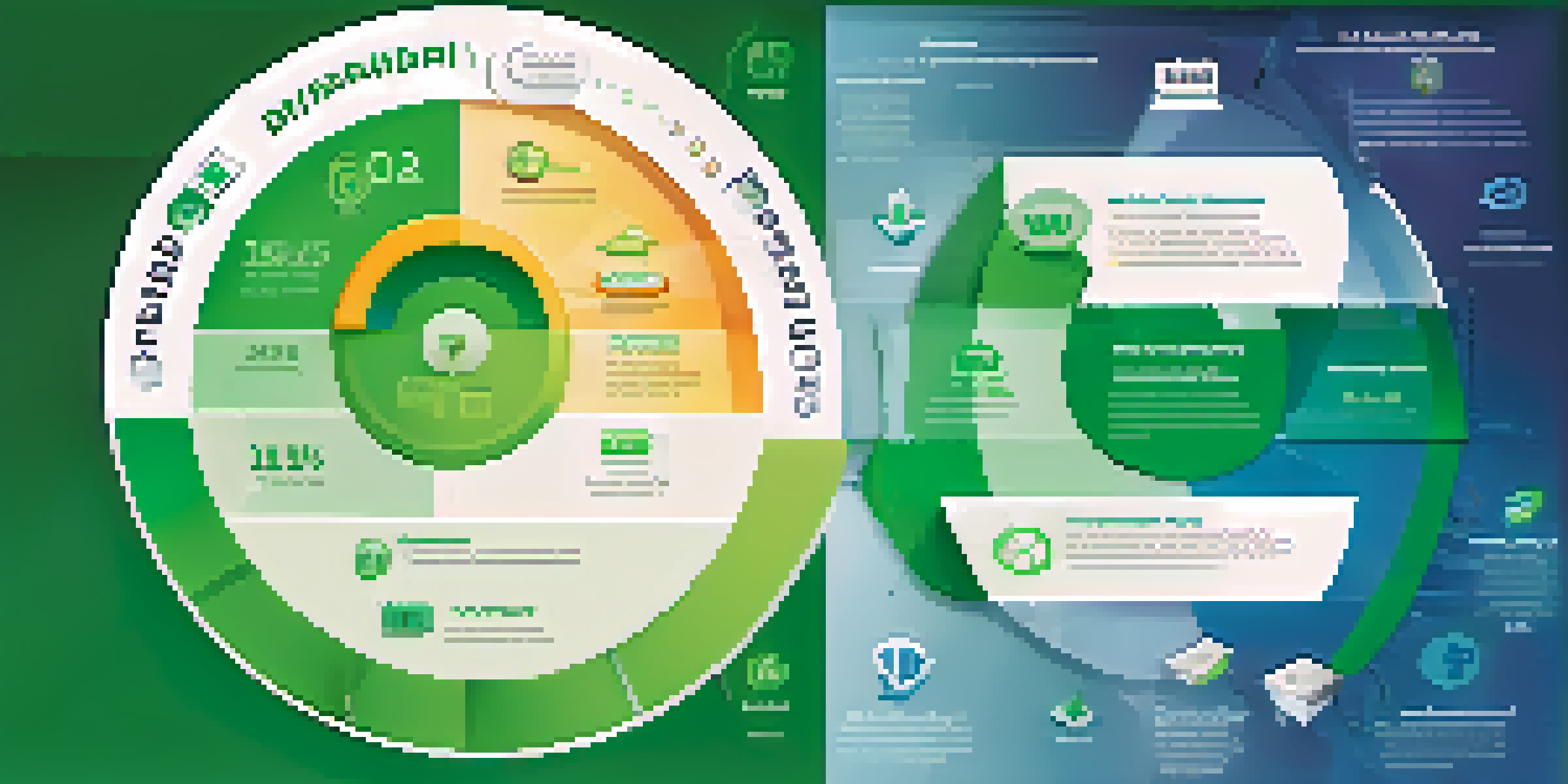Evaluating Dividend Payout Ratios for Smart Investing

Understanding Dividend Payout Ratios: A Key Investment Metric
A dividend payout ratio is a financial metric that shows what portion of a company's earnings is distributed to shareholders as dividends. It's calculated by dividing the annual dividends by the net income. Understanding this ratio can help investors gauge a company's financial health and its commitment to returning value to its shareholders.
In investing, what is comfortable is rarely profitable.
For example, if a company earns $1 million and pays out $200,000 in dividends, its payout ratio would be 20%. This means 20% of its earnings go back to investors, while the rest can be reinvested in the business or retained for future needs. A balanced payout ratio can indicate a stable company, but it's important to analyze it in context.
Investors should look at payout ratios in relation to the industry average and the company's historical performance. A very high payout ratio might suggest that a company is distributing too much of its earnings, leaving little for growth. Conversely, a very low ratio could indicate that a company is plowing back profits for expansion, which can be a positive sign.
Why Dividend Payout Ratios Matter for Investors
Dividend payout ratios are significant for investors, particularly those seeking income through dividends. They provide insights into how much cash a company is willing to return to its shareholders versus how much it retains for growth. This balance can signal the company's overall strategy and financial health.

For instance, a consistent and sustainable payout ratio can attract income-focused investors who rely on dividends to supplement their income. On the other hand, if a company has a history of fluctuating payout ratios, it might raise concerns about its stability and long-term viability.
Understanding Payout Ratios
Dividend payout ratios reveal how much of a company's earnings are returned to shareholders, helping investors gauge financial health.
Understanding these ratios can also help investors identify potential red flags. If a company's payout ratio is exceptionally high compared to its peers, it might be at risk during economic downturns, as it may struggle to maintain those dividends when profits fall.
How to Calculate the Dividend Payout Ratio Simply
Calculating the dividend payout ratio is straightforward and can be done using a simple formula: Dividend Payout Ratio = Annual Dividends / Net Income. This calculation gives you a clear picture of how much of the earnings are being paid out to shareholders. It’s a quick way to evaluate a company's dividend policy.
The stock market is filled with individuals who know the price of everything, but the value of nothing.
For example, if a company declares an annual dividend of $3 per share and has net earnings of $10 per share, the payout ratio would be 30%. This means that 30% of its earnings are returned as dividends, while the remaining 70% can be reinvested in the business.
Investors can find this information in a company's financial statements or on financial news websites. By regularly calculating and monitoring this ratio, investors can make more informed decisions about their investments.
Interpreting Dividend Payout Ratios: What They Reveal
Interpreting a company's dividend payout ratio requires context. A low ratio may imply that the company is reinvesting most of its profits into growth opportunities, which can be beneficial for long-term investors. Conversely, a high ratio could signal that a company is prioritizing short-term returns to shareholders, which might not be sustainable over time.
For example, a tech startup might have a very low payout ratio as it focuses on innovation and expansion. In contrast, a mature utility company might boast a high payout ratio, reflecting its stable earnings and commitment to returning capital to shareholders.
Evaluating Investment Stability
A consistent payout ratio can attract income-focused investors, while fluctuations may raise concerns about a company's stability.
It's also essential to compare the payout ratios of companies within the same industry. Different sectors have varying norms; for instance, mature industries tend to have higher ratios, while growth sectors usually retain more earnings for expansion.
Common Pitfalls When Evaluating Payout Ratios
While dividend payout ratios are valuable, there are common pitfalls investors should avoid. One major mistake is placing too much emphasis on the ratio without considering the company's overall financial health and market conditions. A high payout ratio might look attractive, but if a company is struggling to generate profits, it could be at risk of cutting dividends.
Another pitfall is disregarding the company's dividend history. A company that has consistently raised its dividend over the years may be a more reliable investment than one with a fluctuating payout ratio. History can provide insights into how a company navigates economic challenges.
Lastly, investors should be cautious of relying solely on dividend payout ratios for decision-making. It's crucial to consider other financial metrics, such as earnings growth, cash flow, and debt levels, to get a comprehensive view of a company's performance.
Analyzing Future Growth Potential with Payout Ratios
When assessing a company's future growth potential, dividend payout ratios can play a key role. A sustainable payout ratio suggests that a company has enough earnings to support both dividends and growth initiatives. This balance can indicate a well-managed company that is positioned for long-term success.
For example, if a company has a moderate payout ratio and is investing in new projects, it may lead to increased earnings in the future. This can translate to higher dividends down the line, benefiting investors who prioritize both growth and income.
Future Growth Insights
A sustainable payout ratio indicates a balance between returning dividends and funding growth initiatives, essential for long-term success.
On the other hand, a company with a very high payout ratio may struggle to fund its growth initiatives, which can stifle future expansion. Therefore, looking at payout ratios alongside growth strategies can provide valuable insights into a company's future.
Making Informed Investment Decisions with Payout Ratios
In conclusion, evaluating dividend payout ratios is a vital step in making informed investment decisions. By understanding what these ratios reveal about a company's financial health and dividend sustainability, investors can better assess the risks and rewards of their investments. This analysis can help you construct a balanced portfolio that meets your financial goals.
Moreover, integrating payout ratio analysis with other financial metrics enhances your overall investment strategy. Consider additional factors like earnings growth, cash flow, and industry trends to gain a holistic view of potential investments.

Ultimately, a well-rounded understanding of dividend payout ratios can empower investors to make smarter choices, leading to a more successful investment journey.